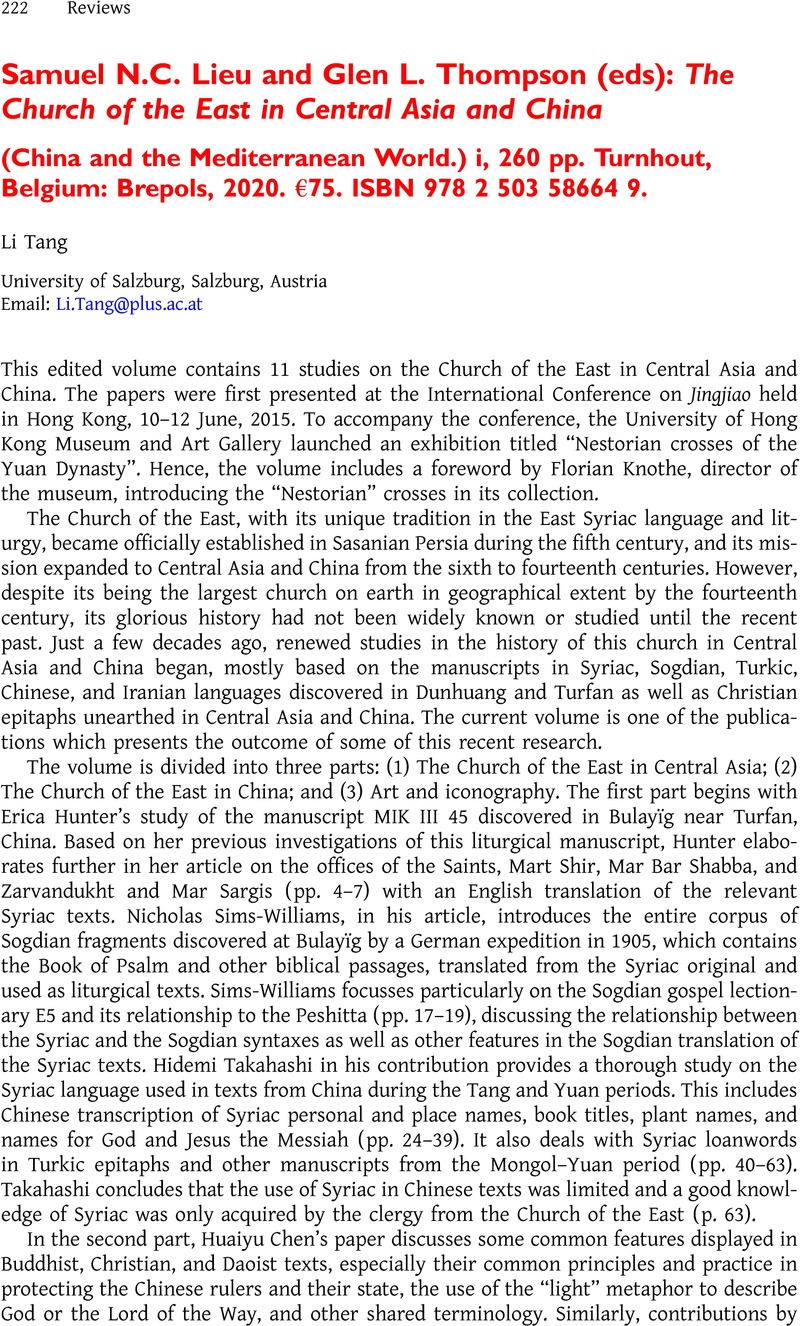No CrossRef data available.
Article contents
Samuel N.C. Lieu and Glen L. Thompson (eds): The Church of the East in Central Asia and China (China and the Mediterranean World.) i, 260 pp. Turnhout, Belgium: Brepols, 2020. €75. ISBN 978 2 503 58664 9.
Review products
Samuel N.C. Lieu and Glen L. Thompson (eds): The Church of the East in Central Asia and China (China and the Mediterranean World.) i, 260 pp. Turnhout, Belgium: Brepols, 2020. €75. ISBN 978 2 503 58664 9.
Published online by Cambridge University Press: 19 February 2024
Abstract
An abstract is not available for this content so a preview has been provided. Please use the Get access link above for information on how to access this content.

- Type
- Reviews
- Information
- Copyright
- Copyright © The Author(s), 2024. Published by Cambridge University Press on behalf of SOAS University of London



